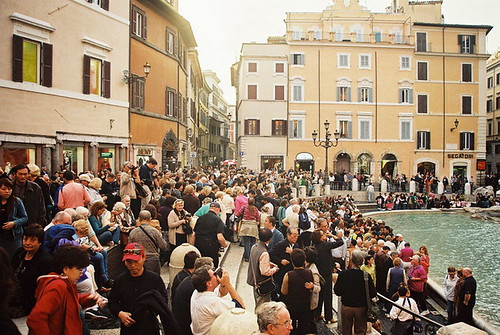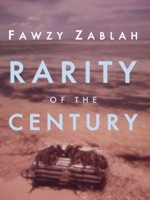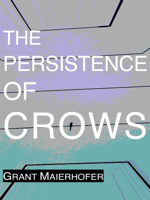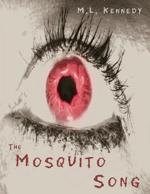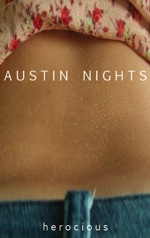 I’m working my way up through the narrow, stone-covered streets, dodging oncoming scooters, cars, Italians rushing home from work, and a plethora of other tourists. My camera bag and tripod hinder me a bit as I swiftly move left and then right, around the slower, aging people and gawkers taking pictures. I feel the soreness of my travel-worn legs as the path steepens a bit. Suddenly, the yellow and brown walls around me open up, and I’m in a plaza, with an ancient Fountain in the middle and an old Romanesque style cathedral anchoring it all. Chairs and tables spill out into the plaza, and people lounge with their coffee or wine. A soft murmuring chorus of voices drift around me and I catch pieces of sultry Italian words as I fly by. I remind myself, “I’m in Rome”, followed by a short burst of exhuberance.
I’m working my way up through the narrow, stone-covered streets, dodging oncoming scooters, cars, Italians rushing home from work, and a plethora of other tourists. My camera bag and tripod hinder me a bit as I swiftly move left and then right, around the slower, aging people and gawkers taking pictures. I feel the soreness of my travel-worn legs as the path steepens a bit. Suddenly, the yellow and brown walls around me open up, and I’m in a plaza, with an ancient Fountain in the middle and an old Romanesque style cathedral anchoring it all. Chairs and tables spill out into the plaza, and people lounge with their coffee or wine. A soft murmuring chorus of voices drift around me and I catch pieces of sultry Italian words as I fly by. I remind myself, “I’m in Rome”, followed by a short burst of exhuberance.
The musical crescendos and decrescendos of the voices at once stir in me a succession of images. A naively sexy Anita Ekberg, not knowing the full power of her womanhood, wanders aimlessly, childlike, in the late hours of the evening, a dress as voluptuous as she flowing behind. Next, a tracking shot looking at the back of a very masculine Marcello Mastroianni, in a tidy black suit, as he uncertainly follows behind down a corridor framed by an infinite row of columns, helplessly lured. I know these images for the permanent emotional stamp left by the scene that they initiate, and they’ve been flashing through my mind ever since I first arrived in this impossibly romantic city.
I come upon a split in the street, each one’s destination obscured by their slight turns further out. The residual warmth of the memory induced by those images is slowly replaced by a tinge of anxiety. Without a map, without a grid, I could only travel in a general direction, trusting my intuition. The setting sun cast a yellow glow onto the old medieval buildings, stretching the shadows of the many shutters on the windows. Driven by a desire to get moving, damn the consequences, I choose the direction where all the others go. There is a sense of excitement from the suspense of where this will lead, heightened by a bit of fear of becoming lost, but an overwhelming faith that I will be in the proper place at the end.
Once again, images appear. Anita Ekberg exhuberantly descends down stone steps, not unlike those that I briskly pace through. There is a purring of a kitten, and her face lights up with delight, her luscious blond hair tossed to one side as she picks it up and playfully sets it on her head. Marcello looks on, amused, enraptured by her spirit, then hurriedly runs to catch up as Anita once again rushes in another random direction, attention caught by the most inane things. It occurs to me that these images may not actually be accurate, it having been awhile since I’ve seen them. But it also occurs to me that it isn’t the actual scene, but the experience of having watched it myself, the emotional experience that was created within me, that has lingered since. It’s this experience, this collection of emotions, excitement, and wonder, combined with the images I do remember, that has recreated this scene once more. And even though the finished scene in my mind may not be exact, the string of reactions and effects on my person is.
I begin to wonder what it would be like to experience Rome without having seen La Dolce Vita. Or any of Fellini’s later magical films. It’s wouldn’t be presumptuous to assume that most people haven’t these days. Though it may seem like the movie adds a special signifcance to my visit here, almost making it seem like a sort of pilgrimage, I must admit that it must be quite nice to see something for the first time unblemished by prior expectations. As I pass by another cathedral, I notice more signs pointing the way to the Trevi Fountain, and my excitement rises.
Now there’s the shot of Marcello, having lost Anita, wandering through deserted streets forlornly, wondering where she has gone, and if he had missed his one chance to be with her. Slowly, the sound of rushing water creeps into the background and becomes louder, until suddenly, Marcello hears Anita’s voice shout out, lustily, “Mar-cello” (Marcello is the name of the character that Mastroianni plays as well). He turns his head to see where the voice had come from, exhilirated once more that he has recovered the most enticing woman he has met yet. And in the next shot, one of the most memorable in La Dolce Vita, the source of the now roaring water is revealed as the Trevi Fountain, breathtaking in its expanse and imposing in its artistry. Water rushes out in multiple openings, the roar making Neptune and all the horses carved in the marble almost lifelike, eternally in mid-air attack. And underneath it all, wading fully clothed, in childish joy, is voluptuous Anita, her seductiveness at full strength, exhuding an inconquerable sexiness. She shouts once more, “Mar-cello!”, and he decides to go in after her. He takes his shoes off, and wades in, not afraid of ruining his suit, for the chance to taste those godly sweet lips of hers. He wades closer to her, as she stands under a pouring spout, eyes closed, waiting. His lips approach hers. And just as it seems that he has finally attained what seems to be a piece of heaven, in the early hours of the morning, something happens. The roaring of the water begins to decrease slowly, until it becomes only a drip. Then complete silence. Marcello freezes. Actually, time itself seems to freeze for that one moment. A few light, sweet chords from a harp play over the scene. And then things seem to return back to normal. Anita runs off once more, out of the Fountain, and Marcello is left standing there, wondering about how close he had come to perfection. The shot holds for a few seconds of Marcello standing there, alone in the Fountain, then fades to black.
There is something about this scene that captures my imagination, something sublimely romantic. Not just in the lovers sense but also in that other sense, the one of an attainment of something ideal. Marcello is chasing after this woman in the scene, but in the broad picture, it mirrors his attempt to find happiness, of trying to find what it is in life that makes it fulfilling, and specifically, in his work, writing. The feeling the audience experiences by watching Marcello go after something unattainable in this scene is the same feeling experienced after watching his fruitless attempt to attain happiness in life, at the end of the movie. And it’s the same feeling experienced in any situation in which one is trying to capture the uncatchable, to achieve perfection. There’s a spark of familiarity in this experience, recognizable as an universal experience, something undeniably human. The scene’s construction has a magical effect, what can be described as a sudden rush of exhiliration or an elevated consciousness. There’s a feeling or overwhelming knowledge that what you’ve seen and the ensuing experience you’ve felt is something that is a truth, something in the realm of ideals, common to all of humanity. There’s a sense of oneness, or sympathy, a knowledge that what you’re feeling is something that others who have seen it have felt, and something that the director has felt. And in that moment you know that the experience that you’ve just had is the exact one that the director wanted to convey. There’s a shared understanding, at that moment, a connection so deep that it can only be correct, and a humbling feeling of the oneness that is possible with humankind and the power that art can have.
As I near the Trevi Fountain, I too hear the sound of water roaring, gradually increasing. As I finally walk into the open plaza, I try to push my way through the throngs of tourists. The voices from the crowd, in English, Japanese, German combined is almost louder than the sound of the pouring water. There are flashes everywhere, people standing for pictures and others walking into their shots. Over on one side, there are street performers, some painted completely in gold, standing statuesque, patiently waiting for money. Others are dressed in business suits bent to look like they were blown back by a strong wind, frozen in a walking pose. There’s laughter from a gathered circle of people as one changes poses. The plaza itself seems much less grand than in the film, maybe because it’s so crowded. On another side, there are street vendors, of Middle Eastern or North African appearance, peddling small toys and bubblemakers. Some of them blow bubbles to attract customers, and the bubbles slowly float over the crowd. It’s almost a carnivalesque atmosphere, defiling my romantic ideal of the famous Trevi Fountain scene from the movie. Soon I’m able to see the fountain, and it looks much smaller in real life. People stand in front, posing for pictures, some throwing coins over their head into the pool, supposedly to be granted their wishes. I’m jostled here and there as people want me to move so they can take pictures. At first, I’m not sure whether I’m at the right fountain. But slowly, disappointment overcomes me as I realize that this is the one. I’m almost reluctant to even take a picture of it. Sadly, though, I do, fully knowing that what will come out will further reduce my romantic memories of this place. And as I snap away (When in Rome…), becoming one with the tourist horde, I hear echoes of Anita’s effervescent voice, calling “Mar-cello!”, slowly fading into the incomprehensible babble of the crowd.
::for a similar read, check out De Sica, Moravia, Bellucci::


